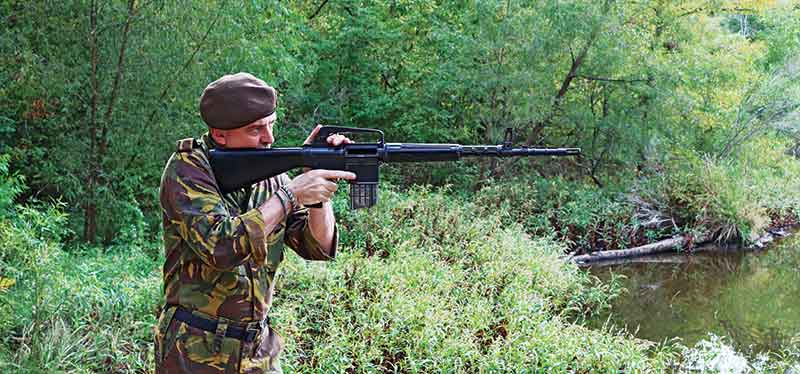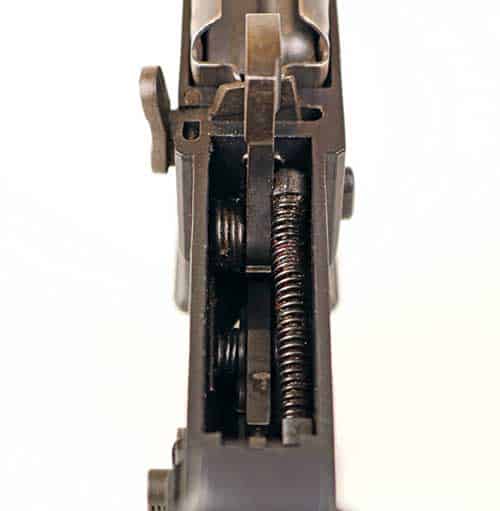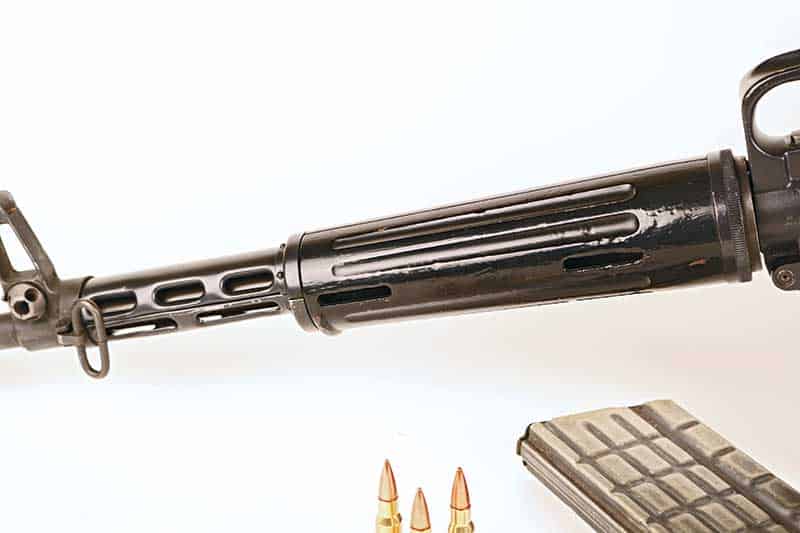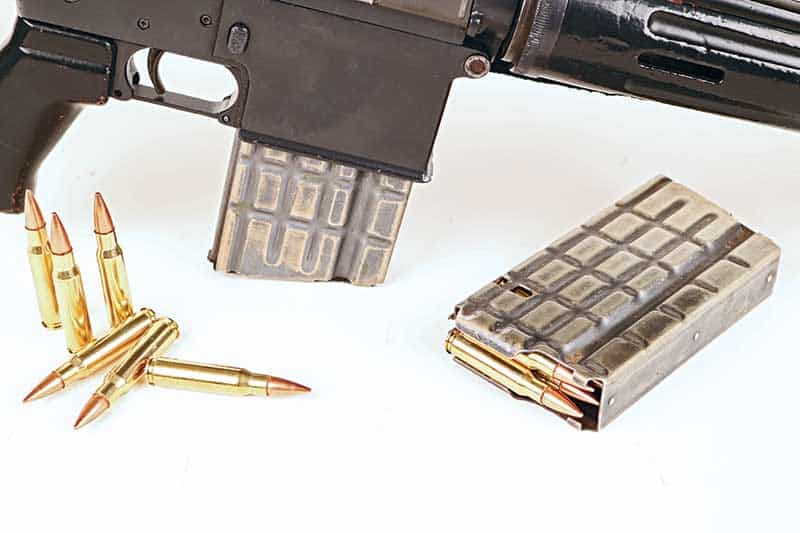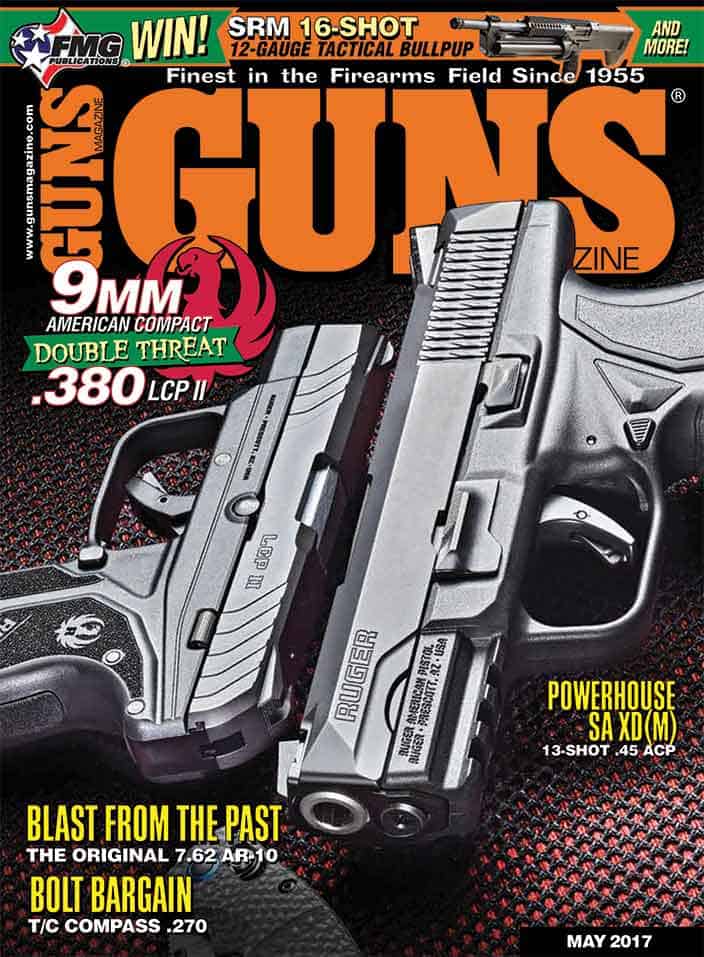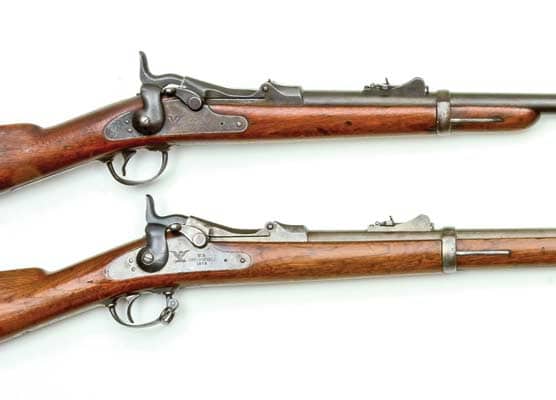Stoner's 7.62 Masterpiece
Space-Age Materials And Out-Of-The-Box
Thinking Led To The Legendary AR-10
There is a Biblical story taken from the book of Matthew about a man who stumbles upon a treasure hidden in a field. Desperate to have it, he sells all he owns, buys the field and, in so doing, acquires the treasure. While the acquisition of my vintage AR-10 rifle certainly lacks the gravitas of the eternal salvation referenced in the scriptural parable, when I unexpectedly tripped over this classic rifle on an online auction site I did what it took to make it mine. If some of you guys were bidding against me I am truly sorry. I was shaved and prepped to hock a kidney if that’s what it took to buy this gun.
The M16 is the longest-serving infantry rifle in American history. For more than half a century some variation of the M16 has occupied American military arms rooms. While the evolution of America’s black rifle has already spilt rivers of ink, the original ArmaLite AR-10 really started it all.
For the gun nerd committed to his craft, perhaps a dozen names really define the modern firearms world. Among them Colt sold a pistol or three and Georg Luger designed a certain 9mm Parabellum cartridge with which you might be acquainted. Hiram Stevens Maxim’s machinegun took life on an unprecedented scale when mounted astride both sides of No Man’s Land during the first War to End All Wars. Whether the sideplate bore the inscription Spandau or Vickers, old Hiram Stevens designed them both.
The Mormon gun maker John Moses Browning earned 128 patents before his death, and his basic short recoil Hi-Power pistol morphed into the likes of today’s SIG, Smith & Wesson M&P, Springfield, HK and GLOCK. Comrade Kalashnikov’s eponymous rifle likely did more than any other single manmade contrivance to sow chaos across the planet. And then there’s Eugene Stoner.
Eugene Morrison Stoner was born in 1922 and served as a US Marine in the South Pacific and Northern China during World War II. After the war Stoner worked as a machinist before eventually becoming a design engineer. He ultimately became chief engineer for ArmaLite, a small division of Fairchild Engine and Airplane Corporation. While employed by ArmaLite, Stoner designed a series of weapons to include the AR-3, AR-5, AR-9, AR-11, and AR-12. While the US Air Force adopted the AR-5 as a survival arm for aircrews, none of these other designs progressed beyond prototype stage.
In 1955 Stoner completed design work on his most influential firearm. The AR-10 melded modern state of the art materials science-drawn from the 1950’s-era aircraft industry in with a combination of several existing revolutionary gun designs. Incorporating the direct gas impingement system of the Swedish AG-42 Ljungman rifle and an in-line geometry wherein the recoil vector travels directly from the bore into the firer’s shoulder, the AR-10 was indeed a groundbreaking piece of engineering.
Stoner’s light burns so brightly among American gun geeks today, the toilet salvaged from his private office was auctioned a few years back. The assumption was this was obviously where the great man did his best thinking so his personal porcelain throne should therefore be a valuable collectible. Heck, had I been there I would have laid down a little cash to own the crapper once used by the guy who designed the M16. Don’t judge…
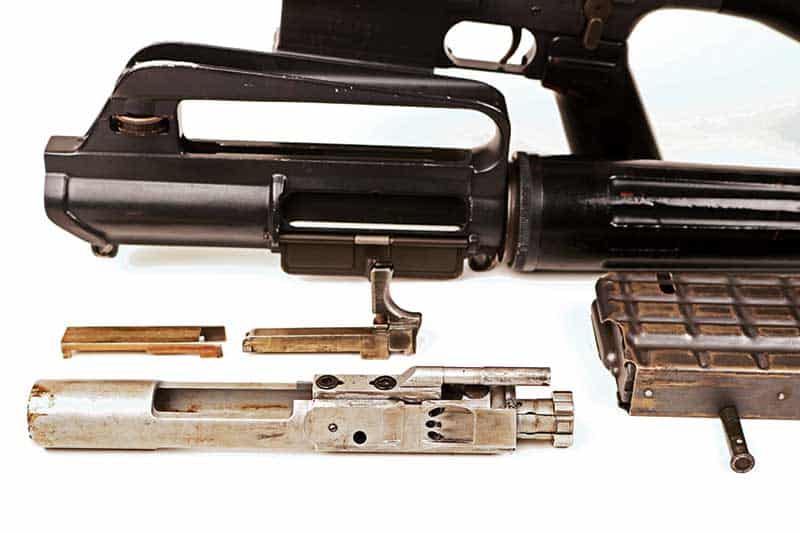
The family resemblance is obvious once the rifle is disassembled. Note the 2-part sheet metal dust cover that telescopes
with the charging handle to exclude battlefield funk. The bolt carrier (above) is hard-chromed for durability and the ejection
port cover springs open on the first round fired. The hammer on this Dutch AR-10 (below) is driven by a coil spring rather
than the more familiar wire springs on our modern AR rifles.
The BackStory
ArmaLite began as a smoldering vision for a handful of gun buddies. George Sullivan and Charles Dorchester were brothers-in-law and, in addition to having married sisters, they also shared a common interest in firearms. Their first project was a fairly conventional bolt-action hunting rifle built using the most advanced fiberglass, stainless steel, and aluminum components available to 1950’s-era industry. They called this remarkably lightweight rifle the Para-Sniper. It eventually became the AR-1.
Dorchester and Sullivan then met Jacques Michault, the president of a Belgian arms company and a fellow firearms enthusiast. George Sullivan subsequently met Richard Boutelle through an acquaintance at a trade show. Boutelle was a veteran of the US Army Air Corps and another gun nerd. He was also the president of Fairchild Engine and Airplane Corporation. Together these four gun buddies formed ArmaLite as a very small subsidiary of Fairchild.
In April of 1954 Eugene Stoner and George Sullivan serendipitously found themselves at the Topanga Canyon Shooting Range in California test firing their newest creations, both developed independently. They struck up a conversation and, as is so common among gun guys, established a new friendship. As a result of the chance meeting, ArmaLite hired Eugene Stoner who eventually went on to become chief design engineer for the small company. From within this fertile soil the AR-10 began to germinate.
ArmaLite was more of a design shop than a production facility. Their business model was to design and perfect the most cutting edge, state-of-the-art combat rifle on the planet and then license its production to other places in exchange for royalties. It was a good idea. The first proper deal they struck was with a company called Staatsbedrijf Artillerie Inrichtingen in the Netherlands.
In addition to having a deplorable excess of vowels, these guys also had the industrial means to make guns for sale elsewhere. Those first Dutch AR-10 rifles fell into about a dozen different models. The only ones even remotely available to American shooters today began as combat rifles issued to the Portuguese Special Forces.
The Portuguese were trying to put out a variety of brushfire wars in Africa in the 1960’s in places like Angola, Guinea and Mozambique. From 1961 to 1974 the Portuguese fought what they called the Overseas War. The colonies in question referred to the conflict as the War of Liberation. (War always seems to turn on your particular point of view.)
In 1974 this war ended with the Carnation Revolution military coup. Hundreds of thousands of Portuguese citizens, mixed ethnicity persons, and military personnel from both Africa and Europe left the continent in what became one of the largest peaceful migrations of humanity in world history. Portugal had formed the first European colony in Africa in 1415. In 1974 they were the last European power to leave.
For about five years in the early 1960’s Staatsbedrijf Artillerie Inrichtingen, we’ll call them A.I. for short, produced about 5,000 AR-10 rifles for use by Portuguese paratroopers in this protracted African colonial war. In general the Portuguese shooters loved the guns. They were accurate, lightweight for their class and reliable. Over the years most of the A.I. guns got chewed up in combat. All of them developed weary bores from extensive exposure to corrosive ammo.
A small number of these guns were demilled and imported into the United States decades ago as parts kits. A handful of resourceful shops essentially handmade lower receivers for these parts kits and then sold them as semi-auto rifles. The shop that resurrected my rifle cut the lower receiver out of steel rather than aluminum.
An even smaller handful of these guns made it into the registry as registered full autos. These full auto examples would likely cost as much as my house. However, with all this as background, I stretched the budget and bought what is arguably the contemporary American gun world’s most expensive shot-out, rebuilt parts gun.
Vital Stats
Studying an original A.I. AR-10 is like looking at a photograph of the great grandparents you never met. You can see similarities defining the family, but there is still an almost eerie strangeness to the thing. For starters, at 41 inches long this rifle is really big.
At 7.25 pounds, those first AR-10 rifles were markedly lighter than their competitors the FN/FAL (9.48 pounds) and G3 (9.04 pounds). Slightly later versions like mine did eventually hit the 9-pound mark. The upper and lower receivers were cut from aircraft grade aluminum and this, more than anything else, defined the rifle. The buttstock and forearm were formed from foam-filled phenolic polymer. The sling swivels were mounted on the left side of the rifle for proper combat use as long as you were right handed. Apparently, there were no left-handed people before about 1970.
The charging handle is rendered as a trigger of sorts nestled within the carrying handle. It incorporates a pair of sliding plates to keep crud out of the action and works just fine. Pressing this charging appendage down locks it to the bolt carrier and allows it to be used as a forward assist device. The rear sight is drum-adjustable for elevation in the manner of later M16A2 sights. The front sight is a fixed blade.
The stamped-steel ejection port cover snaps open in the same manner as all of our AR rifles. Controls are not fenced, and they seem a bit more simplistic than the magazine releases and bolt catches on our modern rifles. They are found in the same spots, however. Takedown pins are captured via spring-loaded ball detents built within the pins, but they can be tapped free if desired.
The barrel weight is about typical for the genre, and the muzzle includes a 3-slot flash suppressor. The front sight base is thinner than subsequent versions but adequately robust. The front sights include generous protective ears. There is a manual gas cutoff valve for use when firing rifle grenades, something Western European militaries seemed much more enamored with than their American counterparts. In keeping with the generally unconventional layout of the gun, the bayonet lug is mounted atop the barrel.
The lower receiver on my gun appears a bit crude, but the originals were not nearly as refined as those to which we have become recently accustomed. Despite fairly simplistic markings and a few tool marks, the component remains fully serviceable. The steel lower on my gun is finished and serial numbered to match the aluminum upper. The steel gives the rifle a bit more heft than the originals. The upper receiver is imprinted with English-style pressure proof data. The British-made Sterling AR180 sports similar markings.

The buttstock is a foam-filled phenolic component and was revolutionary in the days of ubiquitous oiled walnut. The
sling attachment point is arranged on the left side for so-called “carbine carry.” The original AR-10 fed from lightweight
aluminum 20-round box magazines (below). These magazines were stamped with a waffle pattern to enhance rigidity
and were intended to be disposable on the battlefield.
AR-10
Maker: Staatsbedrijf Artillerie Inrichtingen, Netherlands
Action: Direct gas impingement/rotating bolt
Caliber: 7.62x51mm
Weight: 7.25 pounds
Length: 41.3 inches
Barrel Length: 20.8 inches
Capacity: 20
Sights: Adjustable aperture rear/fixed post front, Rate of Fire (originally): 700 rpm
Value: $3,500 to $6,500 (gunbroker.com)
